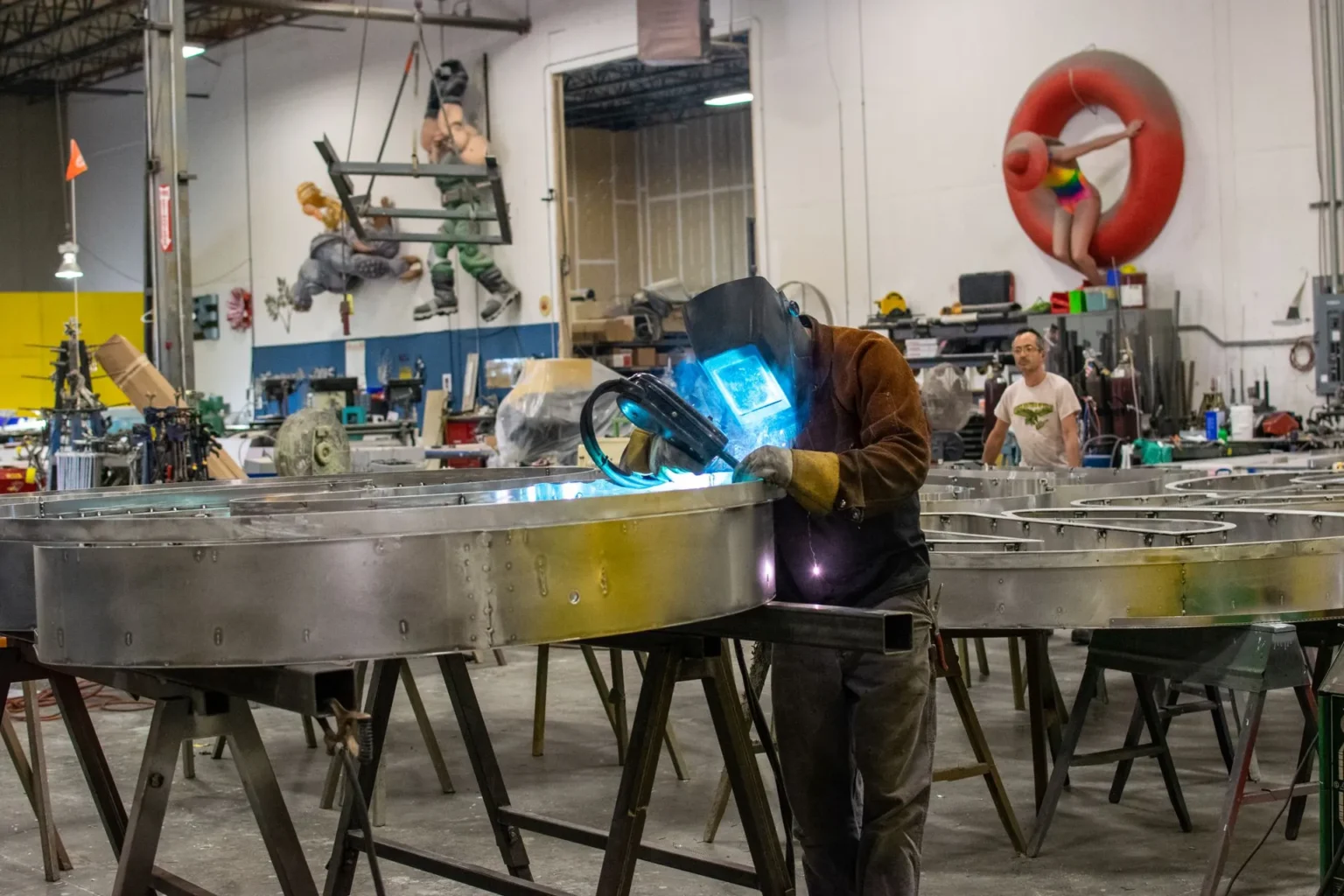In experiential marketing, creating eye-catching and memorable experiences displays is key. These custom fabrications help capture audience attention, encourage brand engagement with your target audience, and drive results. As a leading experiential marketing agency that specializes in 3D fabrication service, we know the importance of choosing the right materials for your custom experiences, props, and installations.
This guide covers materials for custom fabrication in experiential marketing, including:
- Immersive events
- Custom trade show booths
- Branded experiences and environments
- 3D billboards and transit advertising
- 3D props and custom fabricated brand assets
We’ll explore core structural elements and finishing touches, with examples of their use in eye-catching immersive experiences.
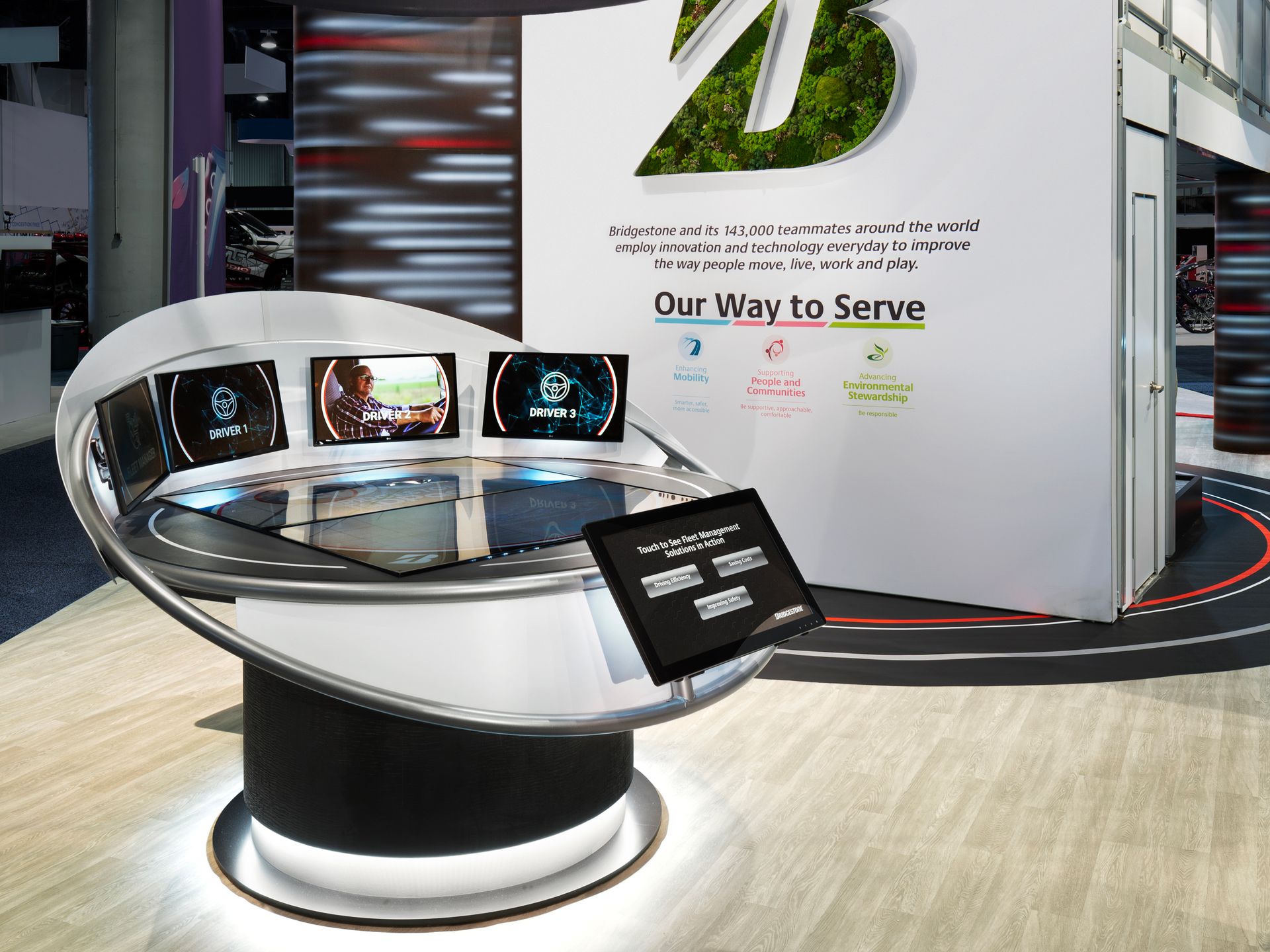
Acrylic
Acrylic, or plexiglass, is a versatile and cost-effective material perfect for creating transparent or translucent elements. It features a lightweight design, shatter resistance, and allows for easy shaping and coloring.
Acrylic fabrication applications in immersive experiences and branded environments include:
- Interactive touchscreens or information kiosks
- Lit brand logos or product displays
- Transparent room dividers or themed environmental elements
- Colorful, translucent overhead canopies for a dreamlike atmosphere
Aluminum
Aluminum is a great choice for indoor and outdoor use. It can be anodized (treated to create a durable, corrosion-resistant surface), polished, or brushed for various finishes.
Aluminum fabrication applications in branded environments and for custom trade show booths include:
- Modular booth structures
- Sleek, modern product showcases
- Large-scale, lightweight sculptural elements
- Durable outdoor signage
- Framework for fabric-based environments or projection surfaces
Automotive Paint
Automotive paint is ideal for achieving a sleek and professional look on custom props. It’s extremely durable and comes in a wide range of finishes, from matte to high gloss.
Applications in custom fabrication include:
- Creating high-end finishes on large-scale props
- Achieving durable, weather-resistant color on outdoor installations
- Producing metallic or pearlescent effects on surfaces
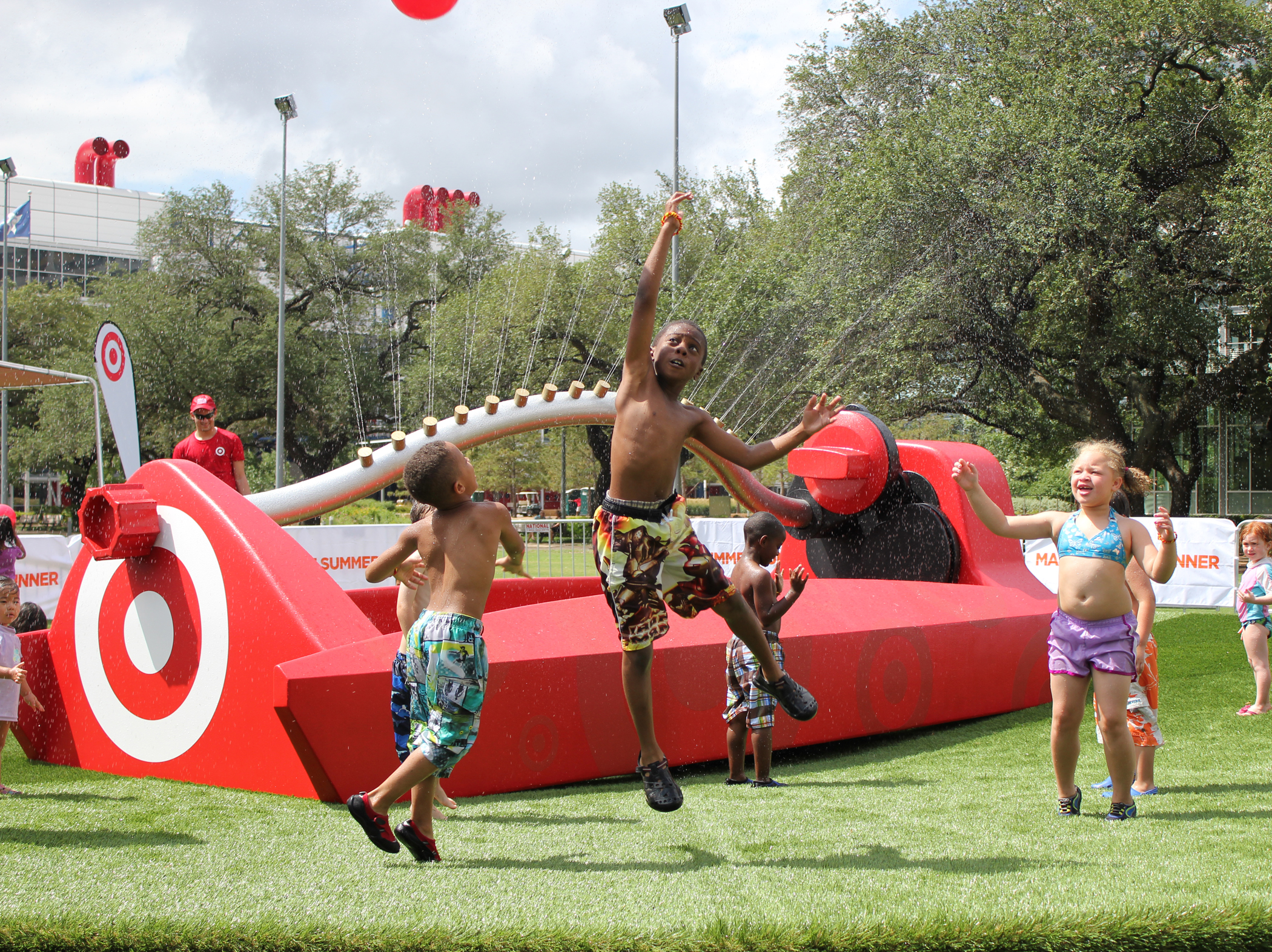
Clear Coats and Protective Finishes
These are essential for protecting materials and finishes to ensure durability and longevity.
Types and applications:
- Clear Coats: Protect painted surfaces and add sheen (matte to high gloss)
- Weatherproofing Sealants: Essential for outdoor installations
- Anti-Graffiti Coatings: Protect high-traffic or public installations from vandalism
- Fire-Retardant Sprays: Improve safety in indoor installations, especially those using fabric or foam
Electronics and Lighting
While not fabrication materials, electronics and lighting are key to many props and installations. They enhance the overall experience and can transform a simple display into an immersive environment.
Components and applications in immersive environments include:
- LED Lighting Design: Create atmospheric effects, highlight specific areas, or add interactivity
- Sensors and Interactive Elements: Incorporate touch, motion, or proximity sensors for responsive environments and dynamic event lighting
- Screens and Projectors: Integrate digital content seamlessly into physical spaces
Epoxy Resin
Epoxy is used for creating unique effects and as a durable finish on props and 3D prints.
Applications include:
- Creating “water” effects or transparent experiences
- Producing high-gloss, durable surfaces
- Embedding objects in epoxy creates unique brand pieces. For example, you can suspend small items inside a clear epoxy block.
Fabrics and Upholstery
Fabric and upholstery enhance the look and feel of spaces and structures with colors and textures. They hide the nuts and bolts while providing a ton of design options. Fabric-based components are often cost-effective, easily transportable, and adaptable, making them invaluable for creating engaging, multisensory environments.
Applications in experiential marketing:
- Fabricating realistic soft props like plants, animals, or oversized objects
- Creating immersive “cocoon” spaces within larger environments
- Adding acoustic dampening to improve sound quality in an installation
- Upholstering custom seating areas that match the overall design theme
Fiberboard
An engineered wood product that’s stable, smooth, and easy to work with.
Applications in custom fabrication and trade show booth design include:
- Custom-designed reception desks or information counters
- Intricate, routed wall panels with brand patterns or textures
- Platform stages or raised flooring elements
- Precision-cut lettering or logos for dimensional signage
- Themed furniture pieces that match the overall environment design
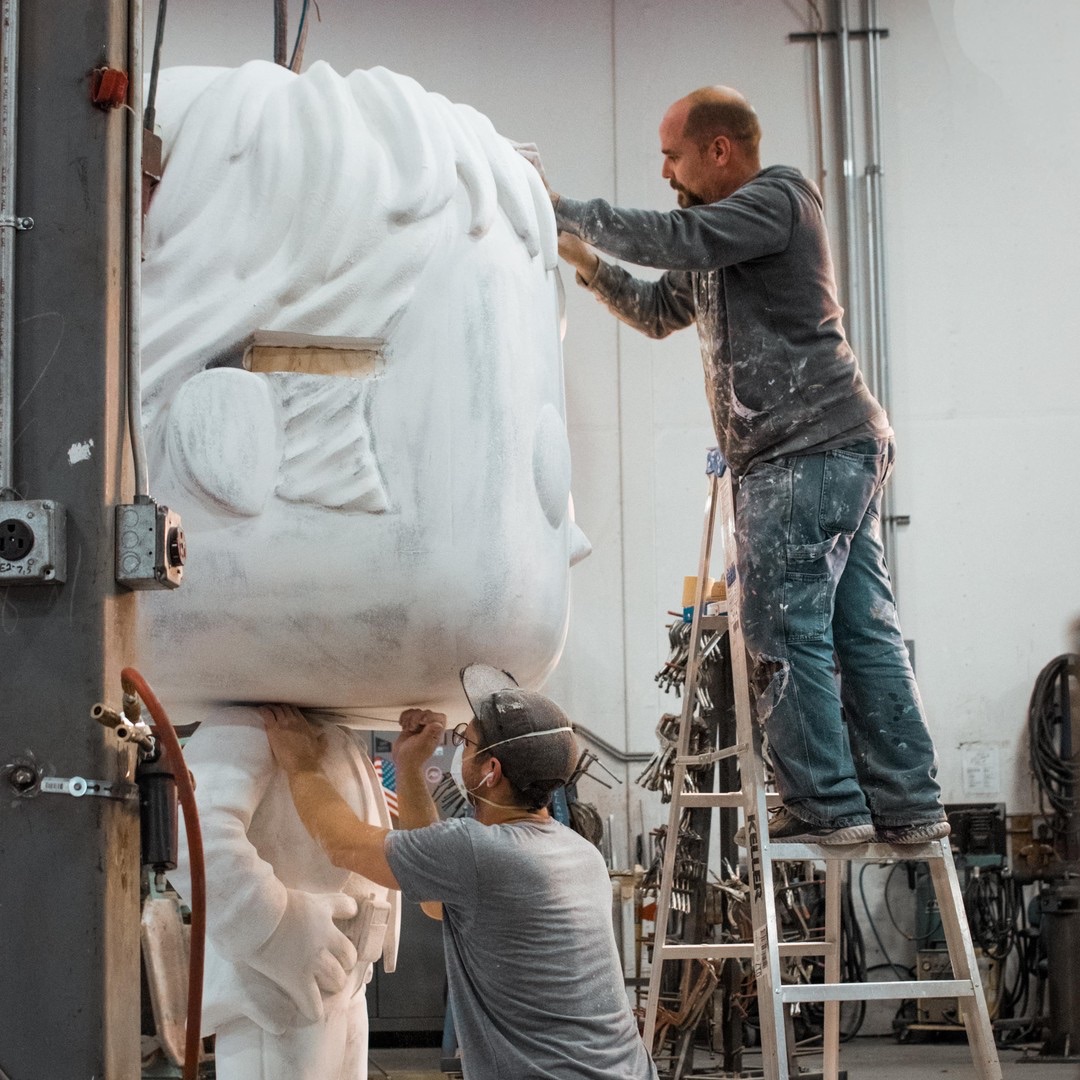
Foam
Foam fabricators use different types, like polystyrene and polyurethane, to create custom props. Foam is lightweight and easy to carve into multiple shapes and sizes.
Applications include:
- Oversized props, product replicas or mascots
- Textured wall panels for themed environments
- Lightweight, movable set pieces for quick scene changes
- Custom-shaped seating or interactive play elements
- Faux rock formations or natural elements in themed spaces
Latex Paint
Durable and easy to clean, great for large surfaces and outdoor applications.
Applications during custom fabrication include:
- Covering large backdrops, set pieces or other scenery painting
- Creating uniform base coats on various materials
- Producing washable, durable finishes on high-touch areas
Paint (General)
Paint is perhaps the most versatile and transformative finishing material in prop making. It can completely alter the appearance of a prop, create illusions, and add depth and texture.
Applications in immersive experiences and branded environments include:
- Creating realistic textures like wood grain, metal, or stone on foam props or custom animatronics
- Applying brand colors precisely to various surfaces
- Producing special effects like aging, weathering, or futuristic finishes
- Creating chalkboard or whiteboard surfaces for interactive elements
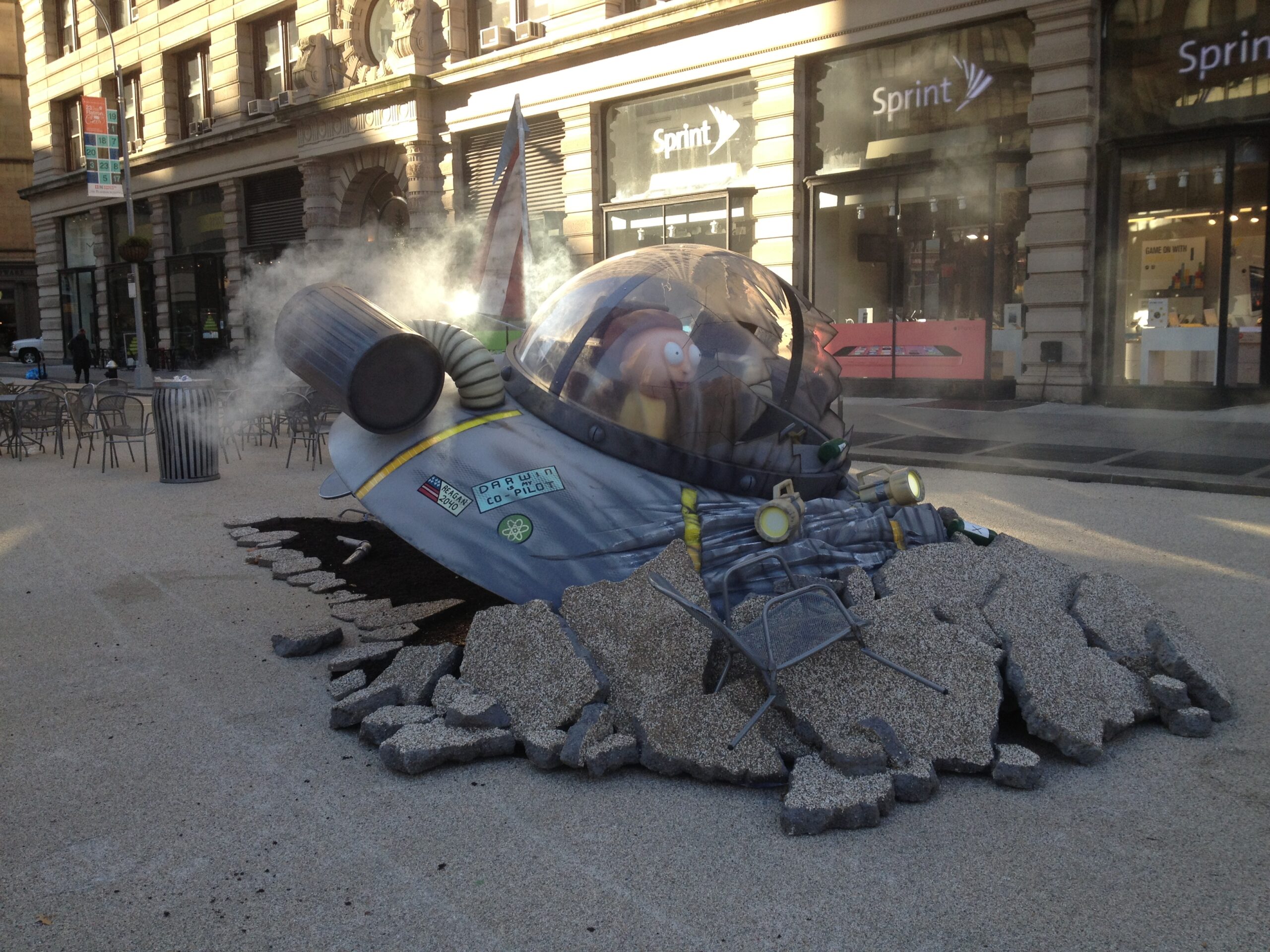
Polycarbonate
Polycarbonate is a lightweight synthetic plastic material known for its impact resistance, which is important where durability is paramount.
Plastic fabrication applications for immersive experiences or outdoor advertising:
- 3D logos, illuminated signs, or large format graphics that can withstand outdoor conditions or frequent handling
- Polycarbonate can be easily cut, bent, and formed into custom shapes or kiosks
- Weather-resistant domes or enclosures for outdoor events
- Transparent slides or tunnels in adventure-themed environments
- Polycarbonate is strong and clear. Because of this, designers often use it for touch-screen enclosures. It also serves as a protective covering for interactive elements.
Silicone
Perfect for creating molds or flexible, skin-like surfaces.
Applications:
- Silicone rubber is excellent for creating flexible molds to reproduce intricate shapes and textures. You can use these molds to cast props or parts in various materials like resin, concrete, or plaster.
- You can also use silicone directly to create flexible, durable props that mimic organic forms or soft materials. It’s great for creating lifelike elements like skin textures and food replicas.
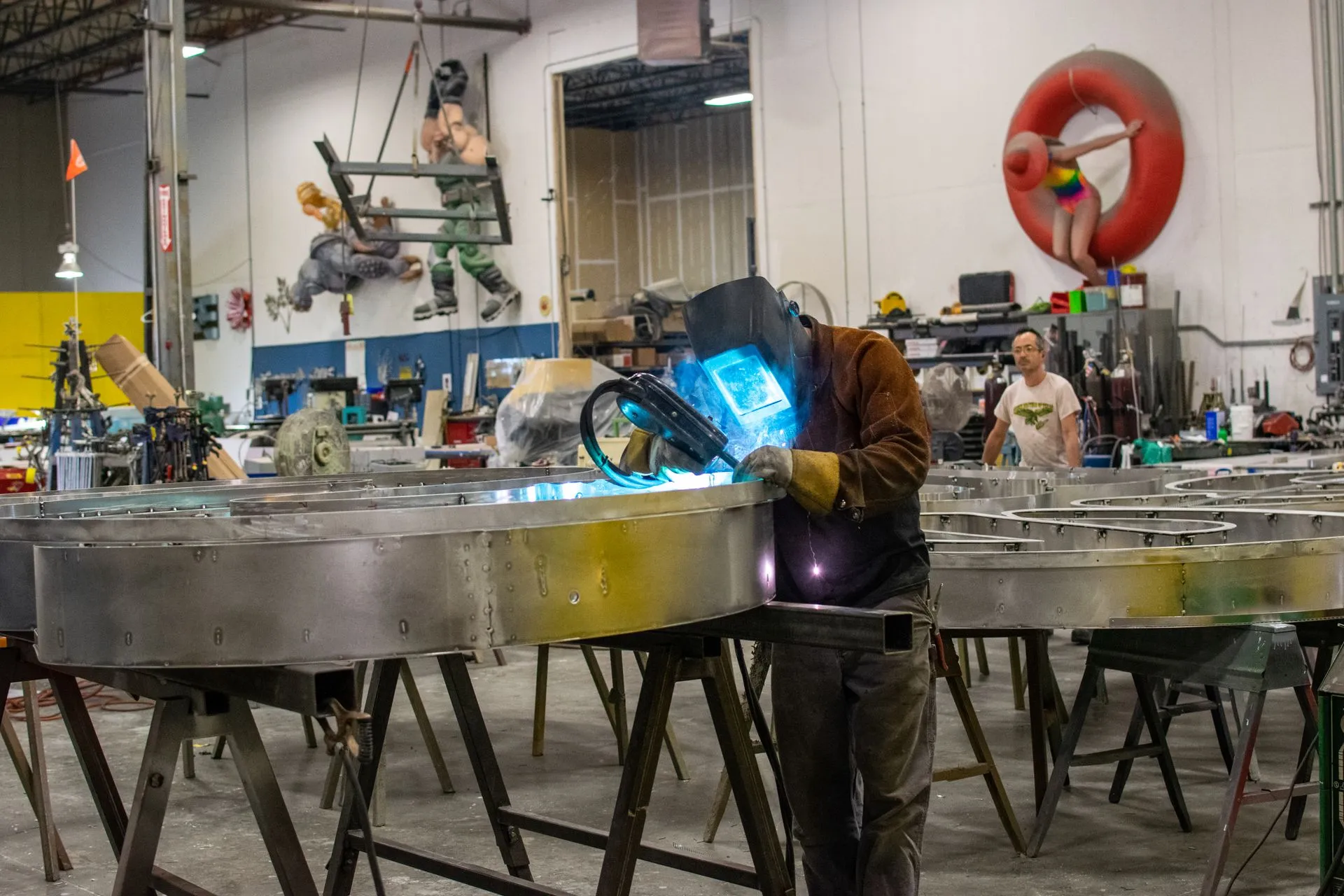
Steel
Designers often choose steel in custom fabrication for marketing installations. It’s versatile, strong, and can be shaped into many forms.
Applications include:
- Steel provides a strong foundation for large-scale installations, ensuring stability and safety.
- Used to create the basic shape and structure of an installation, often serving as a skeleton for other materials.
- Sculptors can weld, bend, and shape steel to create unique 3D forms and artistic components.
Vinyl Wraps
Vinyl wraps offer a quick and reversible way to add color, patterns, or branding to props and installations.
Applications:
- Applying complex graphics or realistic images to large surfaces
- Creating temporary branding on rental equipment or structures
- Achieving a uniform, professional finish on curved or irregular surfaces
- Quick changes to the look of an installation for different events or seasons
Wood
Natural wood brings warmth and authenticity to custom fabrications. Different types of wood offer various aesthetics and properties.
Applications for immersive branded experiences:
- Custom wooden displays, shelving units, and product pedestals can be crafted to showcase merchandise or interactive elements.
- Wood is great for making large scenic pieces. This includes fake trees, architectural features, and abstract sculptures that shape the space.
- Carved or engraved wooden elements can incorporate messaging, logos, or brand storytelling narratives into the physical environment.
- Designers can create custom furniture to fit the needs and aesthetics of the branded environment.
- Signage and wayfinding pieces like 3d letters, directional signs, or information kiosks can guide visitors through the space.
Zinc
While less common, zinc is another option for custom metal fabrication that can add a unique touch.
Applications might include:
- Crafting weathered-looking signage or environmental elements for vintage themes
- Developing striking sculptural centerpieces that change appearance over time
By thoughtfully combining materials from this guide, NPARALLEL + Atomic Props creates multi-sensory, immersive experiences that engage audiences on multiple levels. From the cool feel of metal to the warm touch of wood, each material adds to your brand experience. Transparent acrylics play with light, while strong polycarbonates hold up to use. Together, they create a unique sensory journey.
We pride ourselves on staying at the forefront of industry trends and fabrication techniques. Our team of skilled artists and technicians helps you choose the best materials for your vision. We focus on durability, safety, and visual impact.
Whether you are planning a one-time event or a permanent space, knowing the available materials is important. This knowledge helps you create memorable experiences that connect with your audience.
